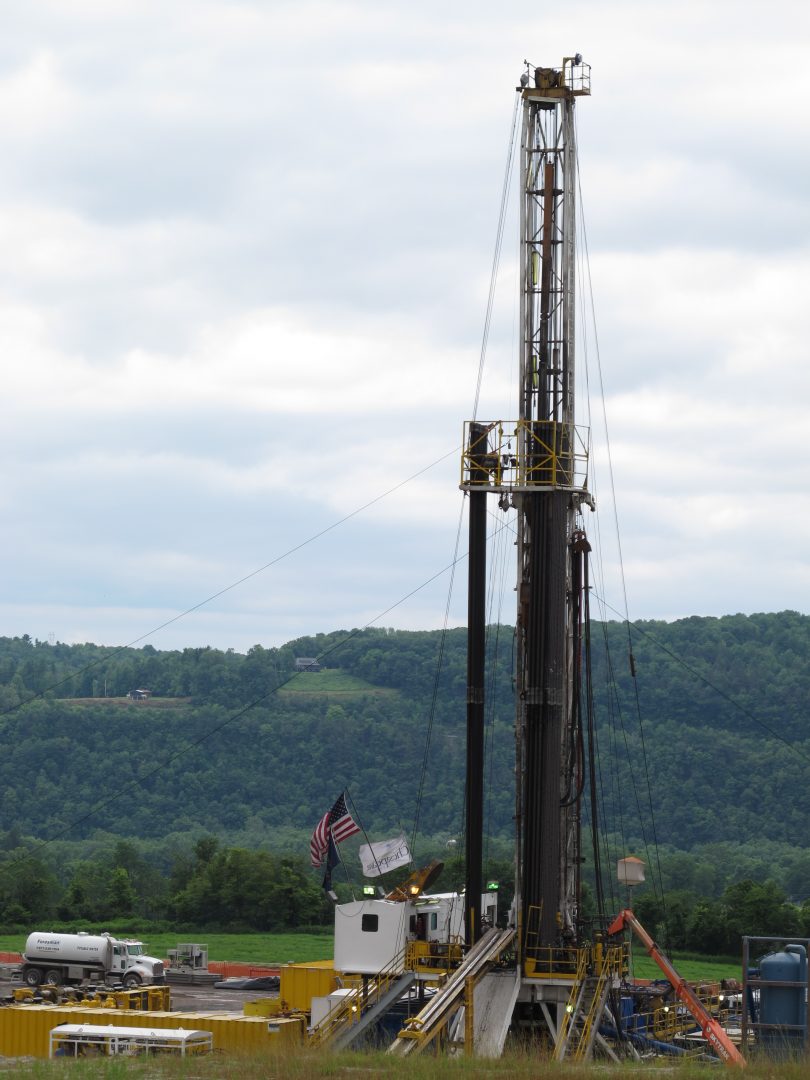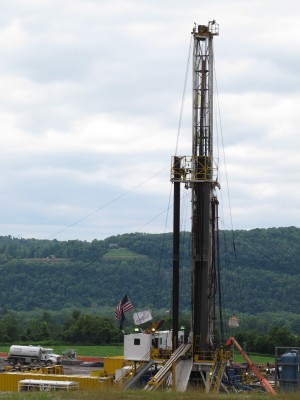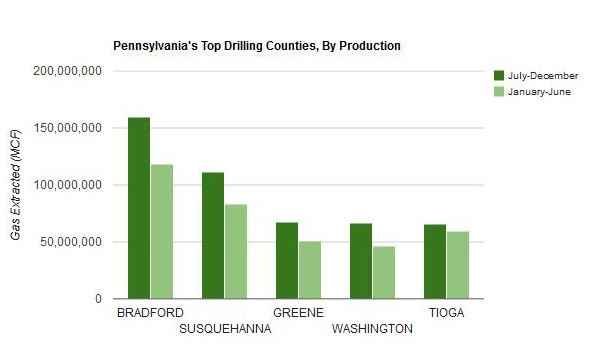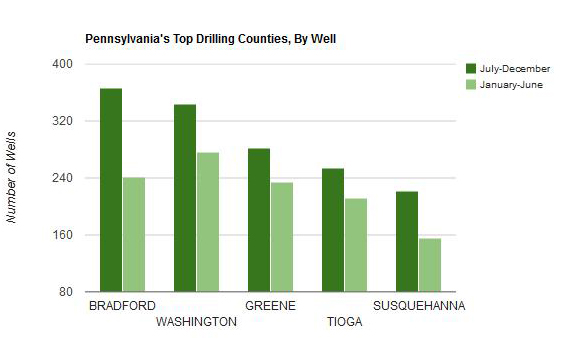
A Bradford County drilling rig
Scott Detrow / StateImpact Pennsylvania


A Bradford County drilling rig
Scott Detrow / StateImpact Pennsylvania

Scott Detrow / StateImpact Pennsylvania
A Bradford County drilling rig

Scott Detrow / StateImpact Pennsylvania
A Bradford County drilling rig
What do Pennsylvania’s new Marcellus Shale well production numbers tell us?
Despite falling natural gas prices, the state’s drilling industry continues to grow. The amount of gas extracted increased by 41 percent from July to December, compared to the first six months of the year. The number of producing wells went up by roughly the same amount: 36 percent.
The Department of Environmental Protection’s production report also shows the northeast has supplanted the southwest as Pennsylvania’s main drilling hub. Bradford County overtook Washington as the commonwealth’s top drilling hot spot. The county’s producing well totals increased by 52 percent, to 366, while extracted gas jumped up by more than 34 percent.

Source: PA Department of Environmental Protection” credit=”
An important note: Bradford County has hosted more drilled wells than Washington County for awhile. But during the January-June production period, Washington had more producing wells — that is, wells extracting natural gas from the ground. This post focuses on producing wells. The new impact fee, however, will be based on drilled – or “spudded” – wells, which is a much larger figure. StateImpact Pennsylvania’s interactive Shale Play app is based on producing wells. We’ll update the page to include the new production report’s information later this week.
Susquehanna County’s well and production totals mirrored the statewide increase: a 42 percent uptick in the number of producing wells, and a 34 percent jump in extracted gas. The third major northeast drilling county, Tioga, experienced more modest gains: a 20 percent well increase, and just a 10 percent spike in gas production.
That’s not to say the southwest stayed dormant. Washington County added about 70 wells, and extracted 42 percent more gas. Greene County added about 50 more wells (a 21 percent increase) and took 32 percent more gas out of the ground.
Northeastern production totals are going up despite the drilling industry’s increased focus on “wet gas”, which contains marketable compounds like ethane and butane. The southwest has much more wet gas than northeastern counties.

Source: PA Department of Environmental Protection” credit=”
The number of wells went up or stayed even in every drilling county. Just two counties experienced production decreases: Clearfield County’s gas totals dropped by 25 percent, despite adding 9 new wells; and Cameron County’s totals fell by 36 percent.
Check out the county-by-county production data in this interactive table:
[spreadsheet key=”0AirC4nWDeIFTdGVLMWxCQVdXZ183djVZWEdFbzRuQmc” source=”Pennsylvania Department of Environmental Protection” sheet=0 filter=1 paginate=1 sortable=1]
StateImpact Pennsylvania is a collaboration among WITF, WHYY, and the Allegheny Front. Reporters Reid Frazier, Rachel McDevitt and Susan Phillips cover the commonwealth’s energy economy. Read their reports on this site, and hear them on public radio stations across Pennsylvania.
(listed by story count)
StateImpact Pennsylvania is a collaboration among WITF, WHYY, and the Allegheny Front. Reporters Reid Frazier, Rachel McDevitt and Susan Phillips cover the commonwealth’s energy economy. Read their reports on this site, and hear them on public radio stations across Pennsylvania.
Climate Solutions, a collaboration of news organizations, educational institutions and a theater company, uses engagement, education and storytelling to help central Pennsylvanians toward climate change literacy, resilience and adaptation. Our work will amplify how people are finding solutions to the challenges presented by a warming world.